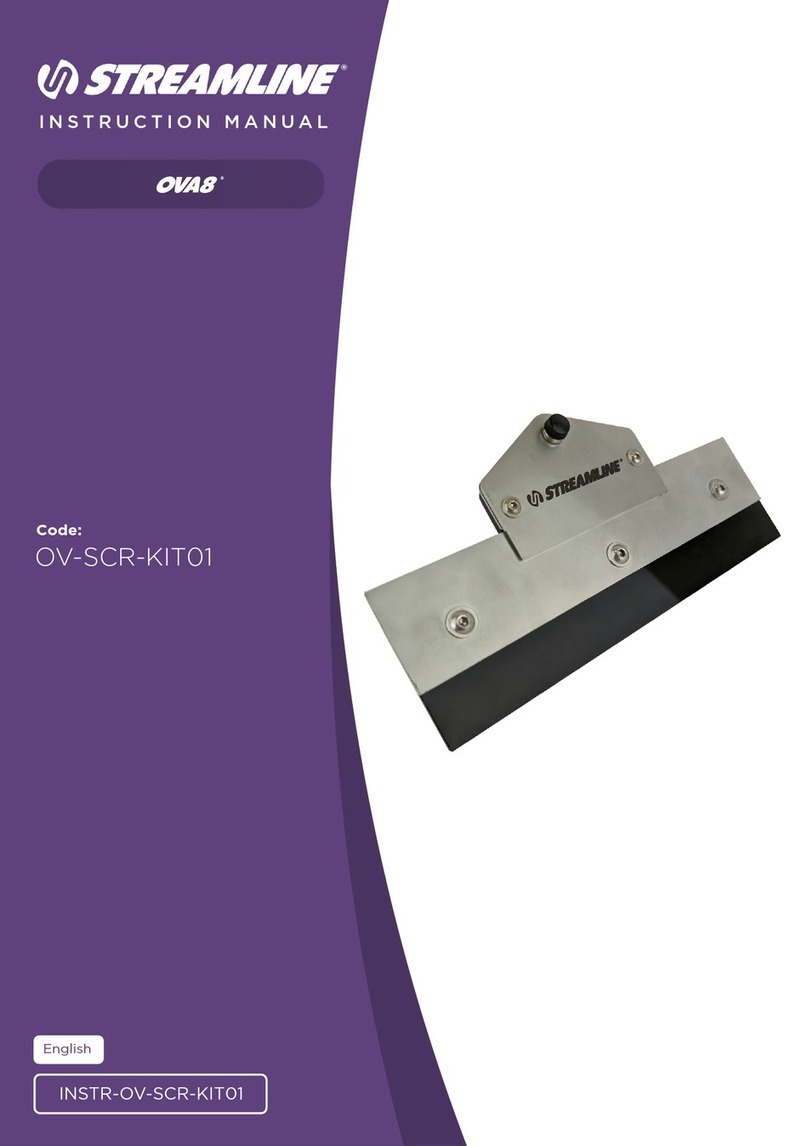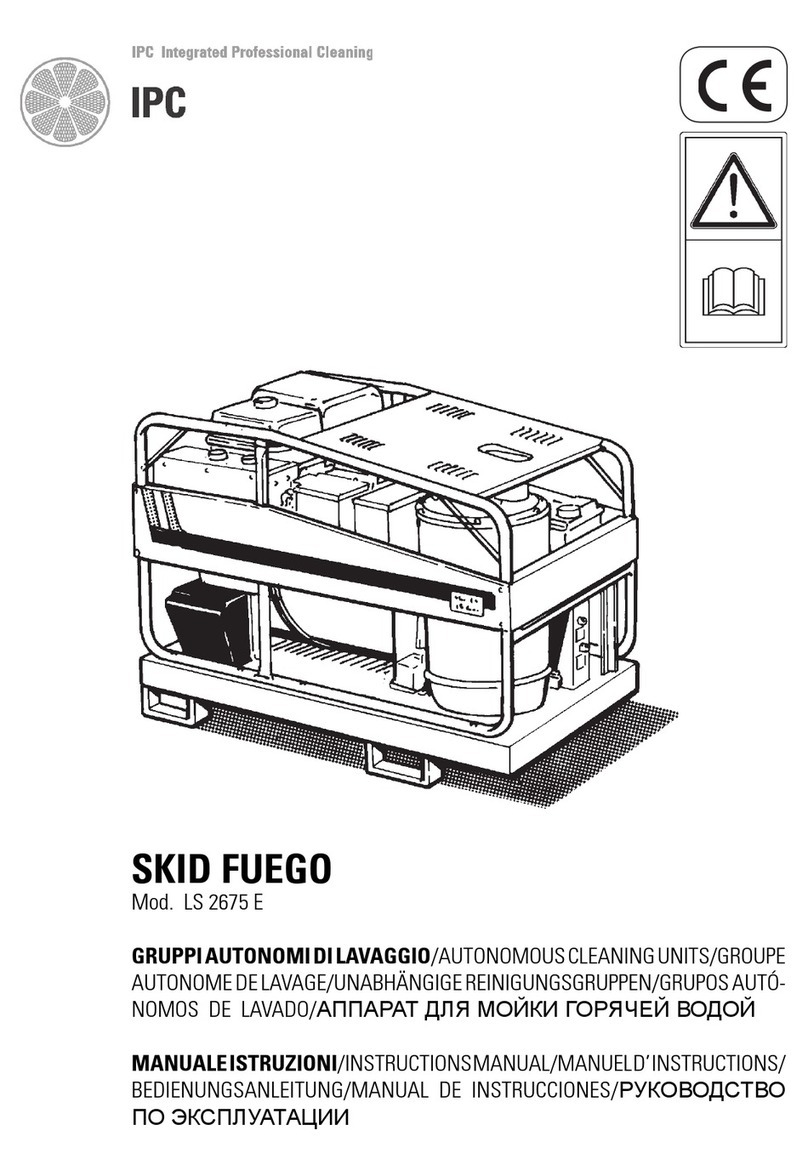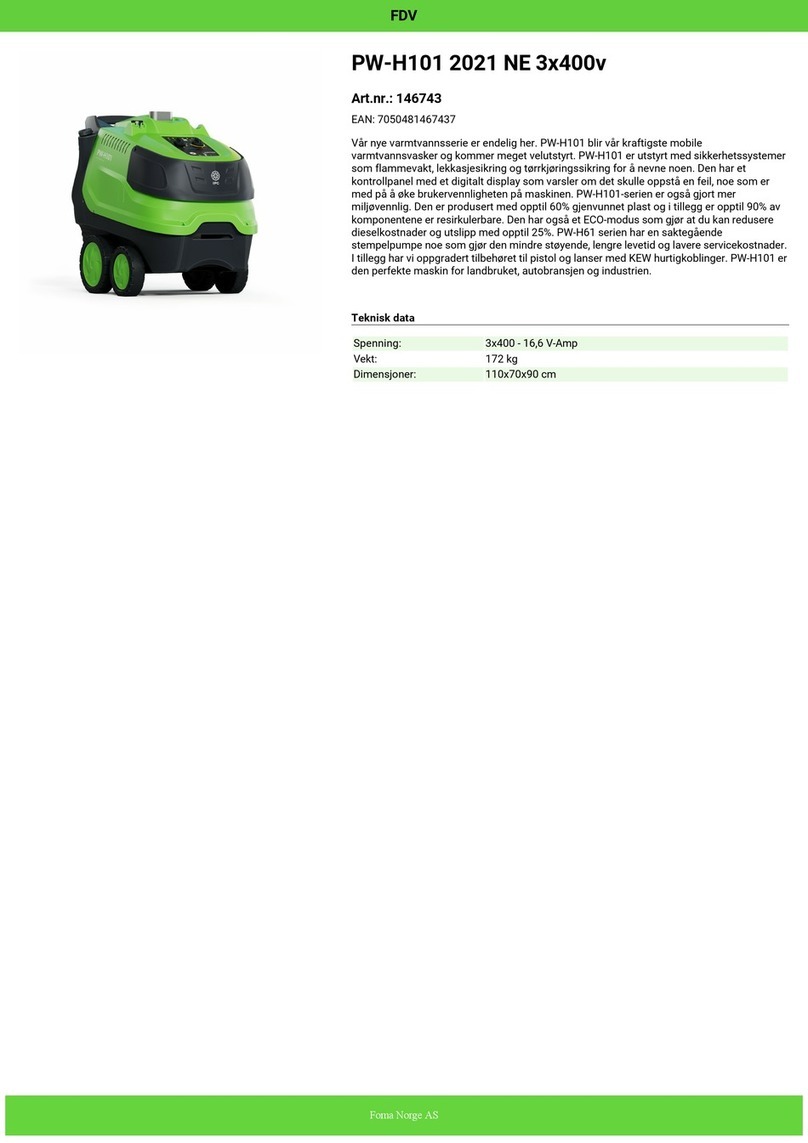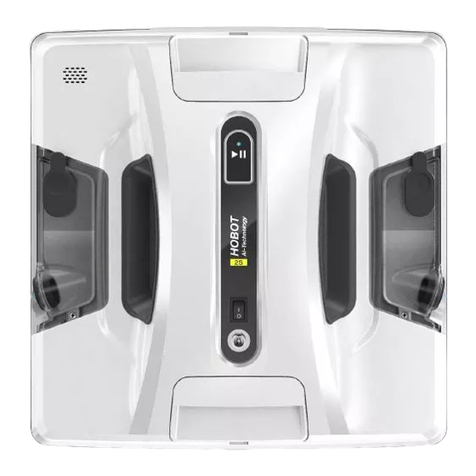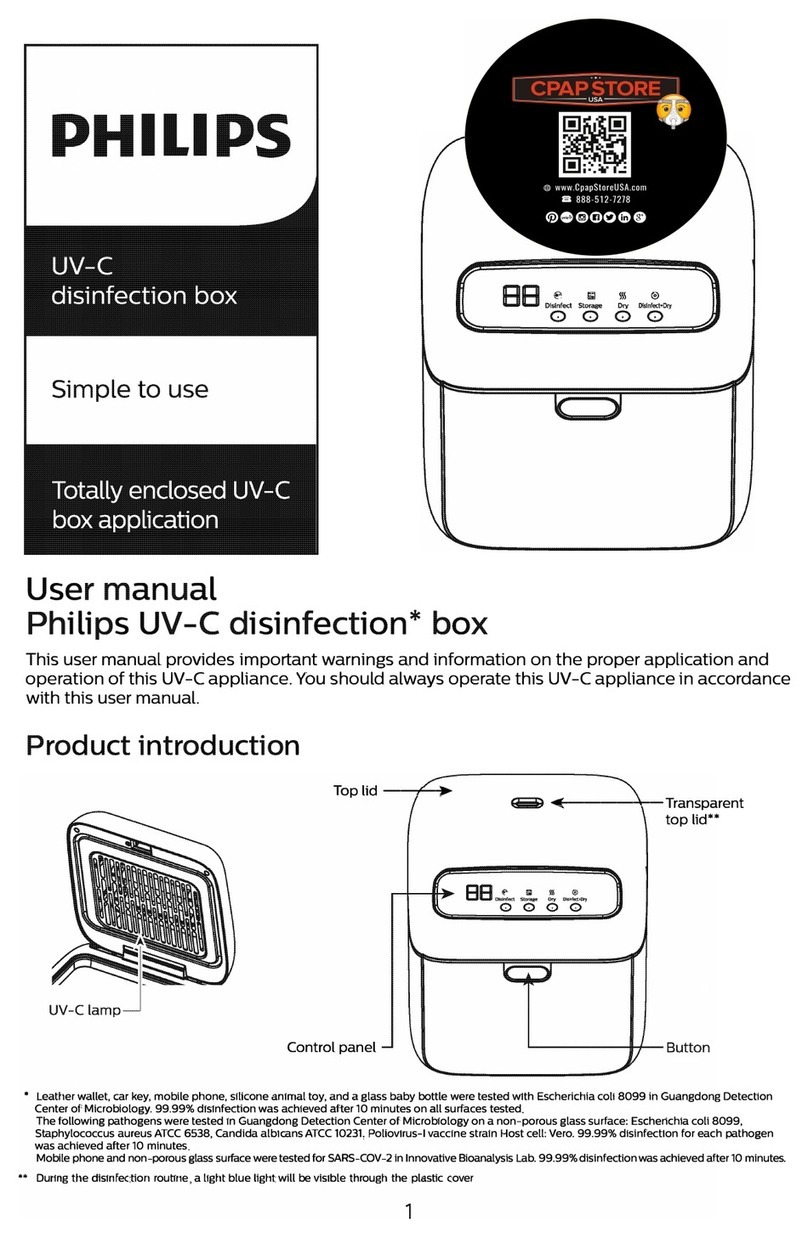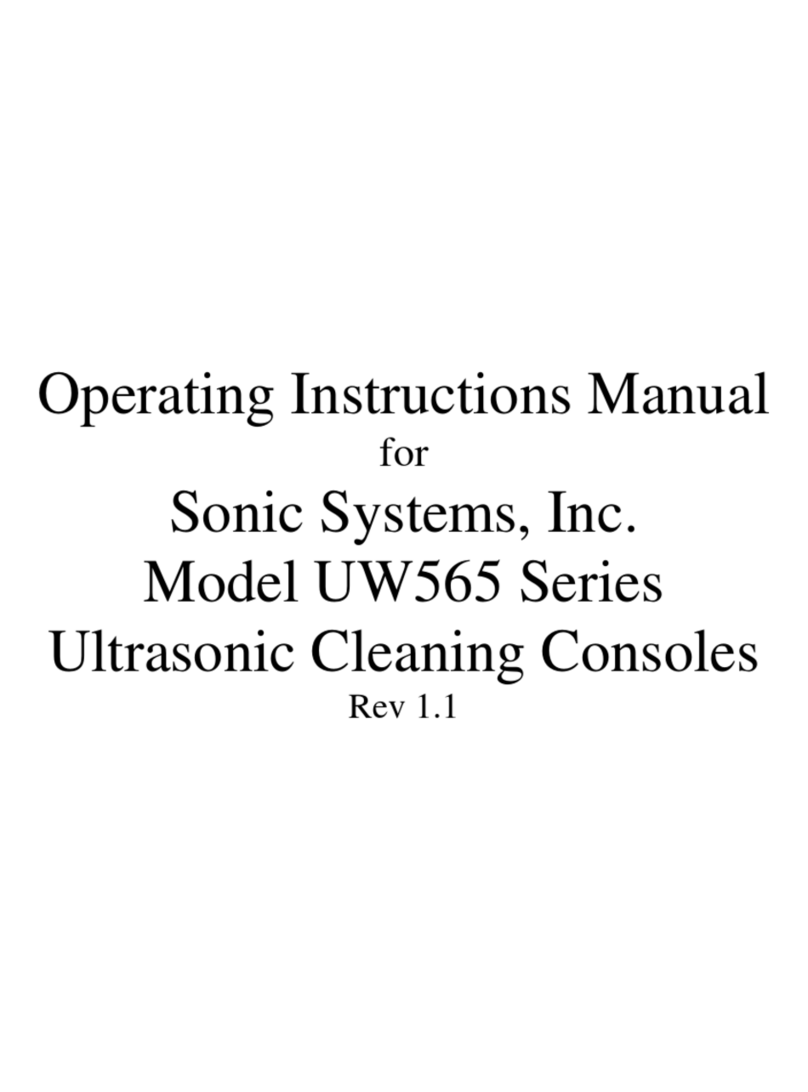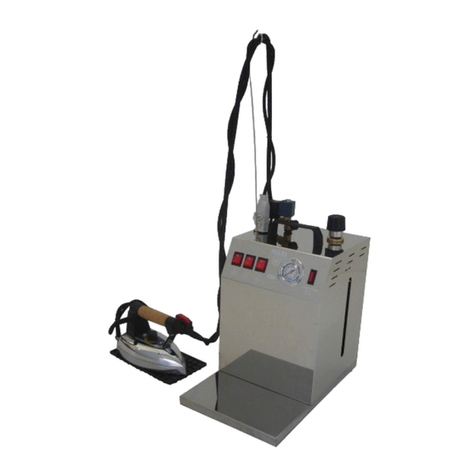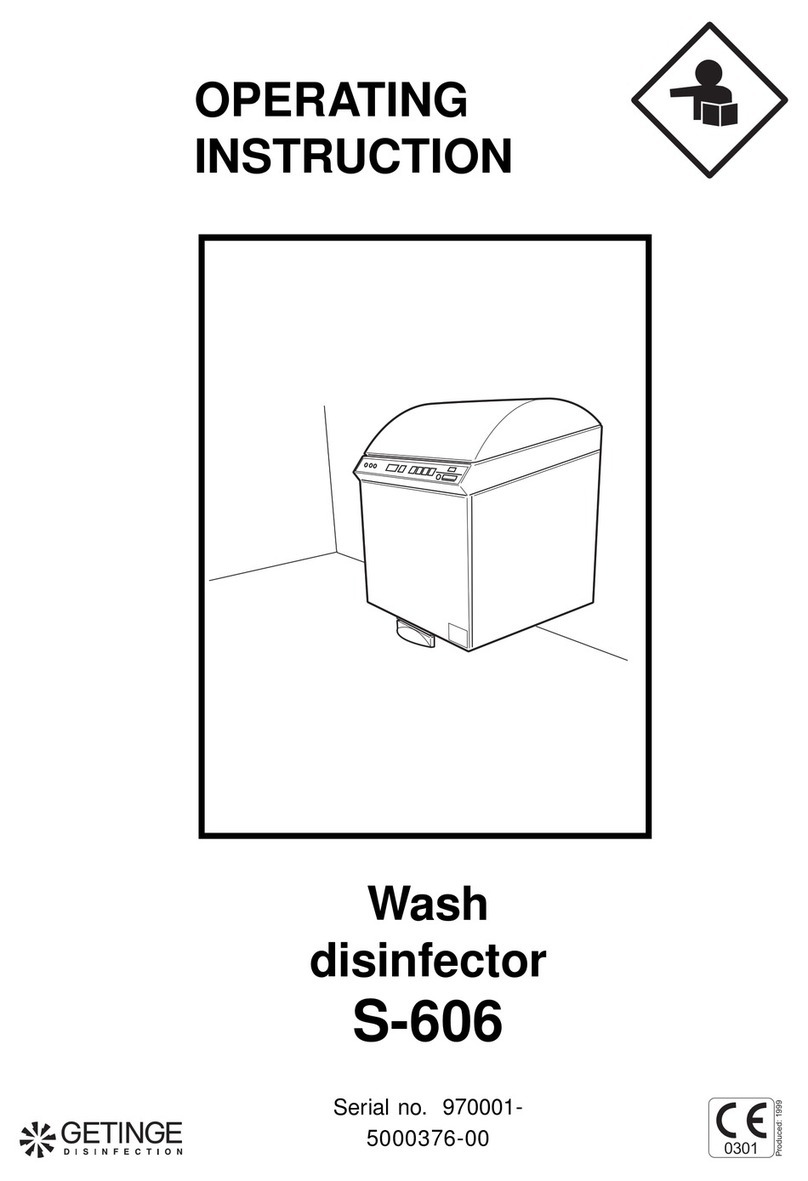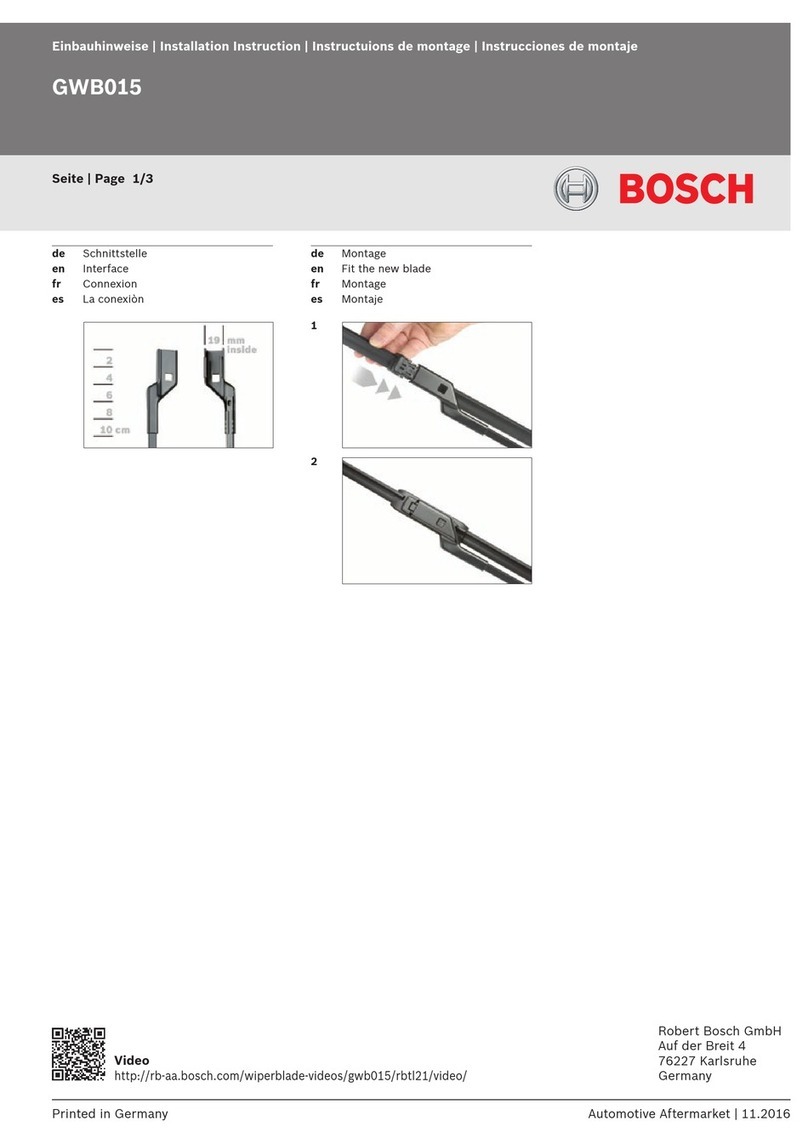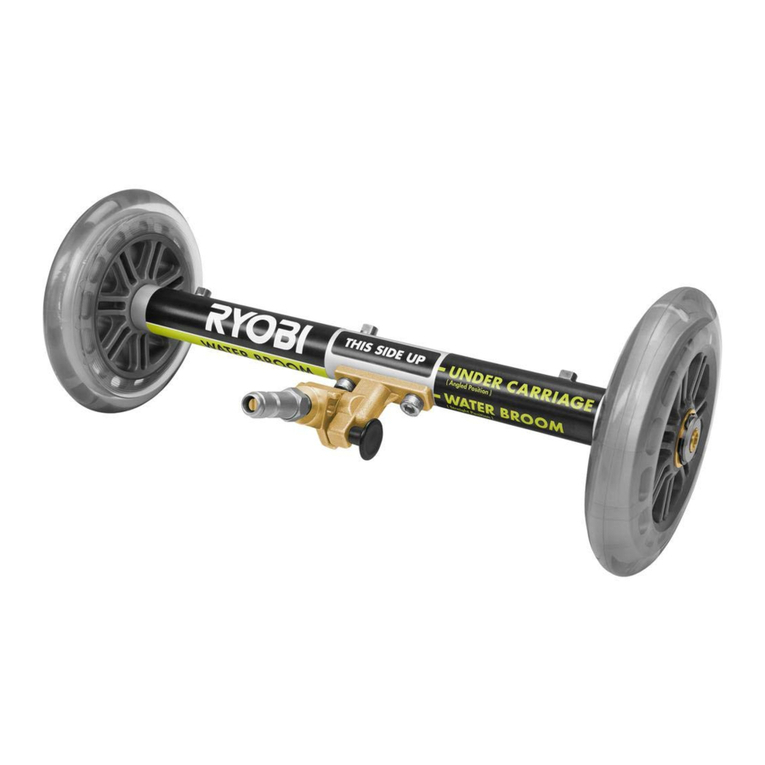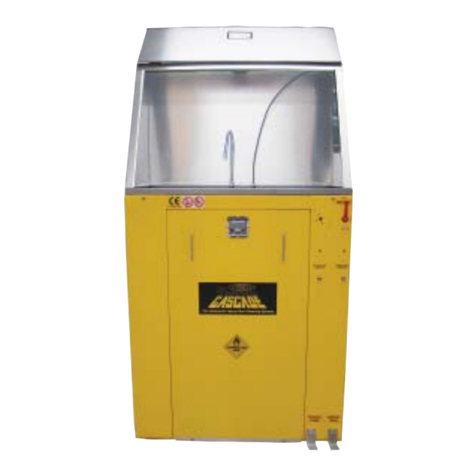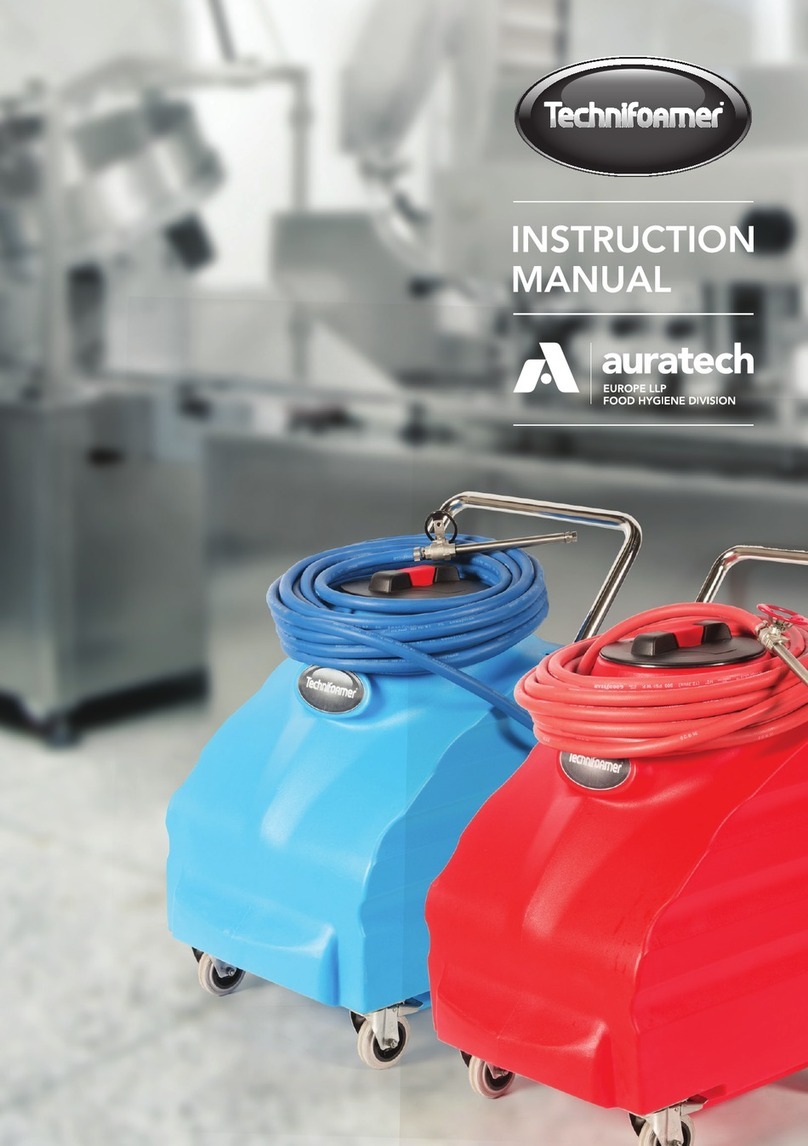ROOTS OIL 200 User manual

1
OIL 200
Operator’s Manual
OIL 200
Oil Recycling Unit
Electric
Read this manual completely and understand the
instructions before operating the machine.
“English Version”
400V/50Hz

2
OIL 200

3
OIL 200
P/N: 557412012-00, Rev: A, Date: 08/2021
Prepared by: KM-NPM TD Dept.
Introducon
Know Your Machine
Machine Operaon
Troubleshoong
Table Of Contents & Important Note
Technical Specificaons
Safety Instrucons
Maintenance
Do & Don’ts
4
7
14
23
3
6
12
19
24
TABLE OF CONTENTS
Intended Use 5
IMPORTANT NOTE:
Roots Multiclean Ltd. (RMCL) is not liable for any
legal claims that may arise as a direct or indirect
result of the contents of this manual.
Roots Multiclean Ltd.
R.K.G. Industrial Estate, Ganapathy,
Coimbatore - 641 006, India.
MACHINE DATA
Please fill at the time of installation for future reference:
Model No. - _______________________________
Serial No. - ________________________________
Blower No. - _______________________________
Installation Date - ___________________________
USER MANUAL
ROOTS philosophy is to continually improve all of its products.
For this reason we may modify the design, appearance and
engineering of our products periodically.
Therefore, some changes, modifications and improvements may
not be covered in this manual.
For the latest Operator’s Manual, visit:
www.rootsmulticlean.com/user-manual/

4
OIL 200
PREFACE
Dear Customer,
We are pleased with your having chosen the OIL 200 machine
for your cleaning requirements. Backed by our industry
expertise that spans across decades, we assure you that the
machine comes with our Roots promise of quality, efficiency and
performance.
We advise you to carefully read through the instructions prior to
the operation of the machine. This manual contains detailed
instructions for the proper operation of the machine, along with
important information regarding its handling, care,
maintenance and service needs.
We are sure that you will find the machine and its performance
to your utmost satisfaction. Once again, we thank you for
choosing Roots Multiclean Ltd. (RMCL) as a trusted partner for
your cleaning requirements and solutions.
USAGE, HANDLING AND MODIFICATIONS
Use of the product beyond the specified scope of functioning is
deemed improper and the manufacturer cannot be held liable
for any damages which may arise due to this.
This machine may be used only by persons who are trained or
are familiar with the machine and are aware of the possible
hazards involved. The appropriate Accident Prevention
Regulations as well as applicable general regulations pertaining
to Safety and Health at the work place must be adhered to by the
user.
Modifications made to machine without the manufacturer's
consent will relieve the manufacturer of responsibility and any
possible liability for consequential damage.
NOTES ON DOMESTIC WARRANTY
Please refer to the Limited Warranty card supplied along with
the machine for additional information. This Warranty Policy is
applicable only for the product sold within India.
If the product requires repair or maintenance work to be
performed, please ensure that you get the machine serviced
from an authorised service center or dealer of RMCL to ensure
that the warranty is not void.
ACCEPTANCE OF THE MACHINE
On arrival of the machine at the shipping address,
please check for any damage that may have
occurred as a result of transit. In the event of any such damage,
the purchaser is bound by responsibility to send a claim letter to
the concerned authorized branch/dealer with a copy of the
invoice. The letter should be sent within 24 hours of receipt of
the machine.
THE MANUAL
All information contained is without obligation. RMCL
particularly reserves the right to modify any equipment,
technical specifications, colours, shapes, materials and the like
so as to adapt them to local conditions all without previous
announcement and without giving reasons. RMCL may stop
manufacturing certain models without previous notice.
The Operator’s Manual corresponds to the latest information
available for this machine at the time it was printed. Minor
deviations resulting from enhancements of the design cannot
be entirely represented.
The Operator’s Manual is an integral part of the machine and
must not be misplaced.
RMCL reserves the right to change the product or contents of
this manual without prior information.
For Battery, Motors, Engines and other OEM components
related kindly refer to their manufacturers manual supplied
along with the machine for instructions regarding usage,
maintenance and service.
NOTE: Illustrations shown in this manual are for representative
purpose only. Actual product may vary.
ŸWe have specified the Model No./Type. in some
contents/instructions.
ŸIf Model No./Type has not been specified, the instruction will
be applicable to all models.
Prior to first operation, read the manual carefully and strictly
comply with the instructions contained.
INTRODUCTION

5
OIL 200
INTENDED USE
This machine is intended for industrial use, for
example in machining centres. It is designed to clean
and collect liquids like oil/coolants with swarf, non-
flammable materials in an indoor environment.
Use only recommended filters/accessories.
Do not use this machine in any other way other than
described in this Operator’s Manual.
INTENDED USE

6
OIL 200
TECHNICAL SPECIFICATIONS
Technical Specifications
Description Unit Value
Voltage V/Hz 400/50
Phase 3
Power (Output), Max KW 3
Protection IP 55
Insulation CLASS F
Vacuum Pressure (Full Close) mm of H2O2957
Vacuum Pressure (Operating Condition) mm of H2O2652
Air Flow m3/hr 305
Delivery Flow Rate lpm 150
Container Capacity (Float cut-off) Liters 235
Chip Basket Capacity (Theoretical) Liters 50
Suction Inlet mm 50
Filter Type OIL MIST
Sound Level dB (A) 83
Weight Kg 220
Dimensions - L x B x H mm 1460 x 660 x 1590

7
OIL 200
SAFETY INSTRUCTIONS
All paragraphs in this manual referring to you personal safety,
the safety of your machine and the environmental protection
are attributed one of the following warning symbols:
Safety provisions in dangerous situation caused by misuse
inaccurate adherence of instruction or prescribed work routine.
Safety Provisions (persons and goods)
Due to use of substances representing an inherent danger to
health of environment.
Ecological Hazard (the environment)
Prior to first operation, read the manual carefully and strictly
comply with the instructions contained.
Read Manual
Important information on handling the machine in order to
maintain operability.
Caution (the machine)
SAFETY & WARNING SYMBOLS
DO NOT CLEAN THE MACHINE WITH WATER
OR HIGH-PRESSURE WATER JET (DANGER OF
SHORT CIRCUIT OR DAMAGE TO MACHINE).
ŸIn addition to the information contained in this
manual, generally applicable legal provisions
for Safety and Prevention of accidents must be
adhered to.
ŸPlease go through the manual and the instructions contained
herein carefully, even if you possess prior experience in
operating similar vacuum cleaning equipment.
ŸSchedule some time for the careful and thorough perusal of
the manual contents.
ŸThe responsibility of all persons in the working area fall upon
the operator of the machine.
ŸNo persons, children included, should be allowed within the
zone of danger.
ŸThe warning and instruction plates attached to the machine
carry important advice on safe operation of the machine.
ŸLost or illegible stickers must be replaced at the earliest.
ŸPrior to operation of the machine, the operator must ensure
that the machine and its working implements are in proper
and safe operating condition.
ŸMachines with identified and known defects must not be
used.
ŸIt is important that operators and all persons likely to use the
machine familiarize themselves with all accessories and
controls, as well as their functions, before commencing
operation.
ŸAdherence to the above general instructions will help avoid
the operator from having to read the manual while operating
the machine.
ŸThe machine is applicable for WET vacuuming .
ŸThe machine may be used only by the authorized personal.
ŸThe machine may be used for cleaning such surfaces
approved by the owner or this authorized representatives.
ŸWhen transporting machine, shut down the motor. The
operator must use the machine in accordance to its intended
fields of application.
ŸDuring operation, the operator must take account of local
conditions (stairs, obstacles) and of other persons,
particularly children.
ŸTurn off the machine before any passage over dormers.
ŸThe following indications are, by themselves, not enough to
fully protect against all the hazards that could arise during
machine operation. These will have to be integrated with
common sense and the experience of the operator, both of
which are crucial factors for preventing accidents.
ŸMaintenance jobs must always be performed with the
power plug detached from the power point.
ŸThe employer must inform and train the user according to
the provisions of applicable laws.
WARNING
General Guidelines
Safety During Machine Operation

8
OIL 200
SAFETY INSTRUCTIONS
ŸBefore using the machine, prepare and train yourself by
reading this manual carefully. Use of the machine by
untrained and unauthorized persons is forbidden.
ŸUsing the machine to vacuum toxic substances is forbidden
unless this has been equipped with special filters required
for the specific type of material.
ŸDo not vacuum flammable materials or substances or which
could cause explosions (fuels, solvents, etc.)
ŸDo not vacuum corrosive substances unless the machine is
equipped with containers suitable for this purpose.
ŸUse of the machine without the supplied filters is not
recommended. If the filters are correctly fitted, the machine
will not eject any objects.
ŸThe machine casing containing moving parts must not be
removed by the user.
ŸUse the machine cautiously on slopes and ramps. Do not
change direction on gradients.
ŸMake sure the parked machine remains stable by operating
the brake wheel.
ŸDuring cleaning operations, maintenance jobs or when
changing parts, the starter switch must be off and the
machine must be disconnected from the power mains by
removing the cable from the socket.
ŸOnly skilled persons should carry out repairs.
ŸPeriodically check the main power cable to ensure this is not
damaged.
ŸIn the event of the cable being damaged, the machine must
not be used.
ŸIn the event of the cable, plugs or couplings being replaced,
make sure these are protected against water spray and
check mechanical strength.
ŸMotor and burnt-out fuses must be replaced by Roots or
authorized dealers. Always use original spare parts.
ŸThe user is responsible for disposing of vacuumed
substances in accordance with applicable laws.
ŸThe machine must not be operated in a corrosive or
explosive environment.
ŸAlways make sure the machine is free of all foreign materials
such as debris, oil, equipment and other objects that could
affect operation and cause injury to persons.
ŸAvoid using flammable or toxic solvents such as petrol,
benzene, ether and alcohol for cleaning.
ŸAvoid prolonged contact with solvents and inhaling their
vapors. Avoid close to open flames or sources of heat.
ŸNever use the machine without the filters.
ŸMake sure all the guards and protection devices are in place
and that all the safety devices are in place and working
properly.
ŸDo not wear loose or hanging clothing such as ties, scarves or
torn garments that could become trapped and be sucked up
by the machine.
ŸThe manual should always be kept handy for
reference so the operating cycle can be
checked every time there are doubts. In the
event of this manual being lost or damaged
ask Roots for a new copy.
ŸStructural damage and improper alterations or repairs could
change the protection capacity of the vacuum cleaner and
therefore cancel this certification.
ŸDuring maintenance jobs, affix a notice to the appliance
indicating “MACHINE BEING SERVICED, DO NOT START”.
ŸClimbing on the machine is forbidden.
ŸNever touch electric wires, switches, button etc with wet
hands. Before connecting to the power mains, make sure the
power voltage and frequency match to those shown on the
machine plate.
ŸMake power connections to a main supply with efficient
earth system. In the event of an extension being used, make
sure this is in perfect condition, marked CE and that the cross
section of the cable is suitable for the vacuum cleaner power
input.
ŸWhen restoring original working conditions, the appointed
personnel should make sure that at the end of the operating
procedure, proper machine operation safety conditions are
restored, especially the safety devices and the protective
guards.
ŸOnly adult persons should use the machine.
ŸDuring vacuuming operations, always brake the machine
using the special revolving wheel lock.
ŸTo ensure the correct operation of the machine, this must be
positioned, protected against atmospheric agents (rain, hail,
snow, fog, dusts in suspension etc.) With an environmental
o o
running temperature between 5 C to 45 C and relative
humidity not above 70%.
ŸUsing the machine to vacuum toxic substances is forbidden
unless this has been equipped with special filters required
for the specific type of dusts. Such filters must be explicitly
requested by you.
ŸDo not open the vacuum container with the machine
running.
- The blower motor is splash-water proof.
- Use of the machine in areas prone to explosion hazards is
strictly forbidden.

9
OIL 200
Turn the motors off to protect the machine against
unintended movements, before leaving it unattended.
Never collect explosive fluids, undiluted acids and
solvents. This includes e.g. gasoline paint thinners or
fuel oil, which-when combined with air, may form
explosive vapors or mixtures. Acetone, undiluted acids
and solvents can be aggressive to the material used for
the machine components.
- Do not clean the machine by means of vapour jet or high
pressure cleaning equipment. Do not allow water to
penetrate the electrical parts.
- Do not USE the machine on steps or slopes.
Safety Plate and Symbols
Crush Hazard
ŸDecals are affixed to the machine showing safety symbols
and/ or messages.
Make sure all the safety decals are legible. Clean these
with a cloth. Do not use solvents, diesel fuel or petrol.
Replace the damaged decals with new ones supplied by
Roots.
- Read the operator’s manual carefully before using the machine
or doing any maintenance jobs.
- Removing the safety decals on the machine is strictly
forbidden.
- The manufacturer declines all liability in relation to
machine safety in the event of failure to comply with
the above indications.
SAFETY INSTRUCTIONS
ŸMake sure that the power cord is not damaged by running
over, squeezing, dragging , etc.
ŸThe power cord must be checked regularly with regard to
damage and aging.
ŸThe machine must not be used unless the power cord is in
proper condition.
ŸUse only original extension cables, with maximum admissible
length of 25 m.
ŸWhen using or replacing power cord, it is necessary to adhere
to as specified by the manufacturer.
ŸWhen replacing coupler plugs of power cord or connecting
leads, splash-proof protection and mechanical strength must
be guaranteed.
ŸDuring use, mind the power cord, avoid crushing or pulling
these.
ŸNever pull the machine by means of power cord or the
vacuum pipe.
ŸWhen replacing with a new power cord ensure the motor
rotation direction. If air is blown out of the exhaust port, the
wiring is correct. (Ensure that this is checked during the
commissioning of the machine)
Only use accessories and spare parts which have been approved
by the manufacturer. The exclusive use of original accessories
and original spare parts ensures that the machine can be
operated safely and trouble free.
SPARE PARTS & ACCESSORIES:
WARNING
DANGER - Do Not Vacuum:
Corrosive/Battery Fluids/Explosive/Flammable/
Magnetic/Radio-active/Biohazard Materials.
PERSONAL PROTECTIVE EQUIPMENT (PPE):
As necessary:
ŸRisk of crushing hands while fitting and locking the chip
basket on the machine.
ŸNever place hands between the chip basket and top cover
while locking.
ŸPerform the chip basket top cover locking operation by
means of latches located on the sides using both hands.
Handling of Power Cords

10
OIL 200
SAFETY INSTRUCTIONS
TRANSPORT
ŸFor easy transportation, the machine is equipped with fixed
(a) and swivel (b) castor wheels.
ŸUse the large handles (c) in the front and rear to move the
machine.
ŸThe machine can be moved only on flat ground!
ŸIf the machine is moved on inclined grounds, you can risk to
lose the control, because of the weight and to damage
persons or things.
The machine must never be moved using a fork-lift or
other equipment that lifts it off the floor.
ENVIRONMENTAL RESPONSIBILITY
The packaging material can be recycled. Please do not place the
packaging into the ordinary refuse for disposal, but arrange for
the proper recycling.
Old machines contain materials that can be recycled. Please
arrange for the proper recycling of old machines. Batteries,
electrical & electronic components contain substances that
must not enter the environment. Please dispose off your old
machine, batteries, electrical & electronic components using
appropriate collection systems at the end of the product’s life
cycle.
a
b
c
c

11
OIL 200
SYMBOL & HAZARD PICTORIAL DEFINITIONS
Read the Operator’s
Manual
Toxic Hazard No SmokingElectrical Hazard
Disconnect Powercord
Do not let powercord
come in contact with
water or other fluids. Electric Shock Hazard
Do Not Use High
Pressure Jets
General Warning Caution Ecological Hazard
SAFETY INSTRUCTIONS

12
OIL 200
KNOW YOUR MACHINE
1. Liquid collection tank
2. Blower unit
3. Changeover valve
4. Chip basket
5. Oil mist filter
6. Chip basket top cover
7. Suction valve
8. Delivery tube assembly
9. Delivery valve
10. Fixed castor wheel
11. Swivel castor wheel with brake
12. Control panel
13. Manhole cover
14. Pressure relief valve (PRV)
15. Suction hose
16. Crevice nozzle
17. Rubber cone nozzle
18. Bend nozzle
19. Wet floor nozzle
20. Extension pipe
1
2
3
4
5
67
8
9
10
11
13
12
14
15
16
19
20
17
18

13
OIL 200
DECALS ON THE MACHINE
Suction/Discharge Changeover Sticker
KNOW YOUR MACHINE
MACHINE ORIENTATION
Front
Rear
Right
Left
Top Cover Sticker

14
OIL 200
WORKING PRINCIPLE
Liquid and swarf (a) will be sucked in through the suction inlet
(b), the swarf will get accumulated in the chip basket (c) and the
liquid will be collected in the collection tank (d). The oil vapour
will be filtered through the oil mist filter (e) and the exhaust air
(f) will be vented out. The liquid will be drained through the
delivery tube (g).
MACHINE OPERATION
OPERATOR RESPONSIBILITY
The operator’s responsibility is to take care of the machine’s
daily maintenance and routine checkups to keep the machine in
good working condition.
The operator must also inform the supervisor when scheduled
maintenance of the machine is to be carried out.
Read this manual completely and understand before
operating this machine. Also ensure that the persons who
are going to operate this machine have also read and
understood the contents of this manual.
The machine is shipped in a packed condition to
the customer’s place. To unpack the machine
follow the below steps:
èRemove the packing crates from the sides and top.
èRemove the box containing the accessories.
èRemove J-Bolts from the chassis of the machine.
èCut retaining straps at the front and rear.
èThe main power cord is wound and tied to the machine.
èCarefully roll the machine from the pallet onto the floor.
èCheck machine and accessories against the order invoice.
èAccessories will be placed inside the chip basket during
packing.
UNPACKING
Top & Side
Crates w/
Carton Box
(Packed Condion)
NOTE
FCare should be taken when removing the packing crate as
to not to damage the machine.
FEnsure that sufficient man power is used to roll the
machine.
FOwner’s personnel are not allowed to unpack the machine.
NOTE
FBefore unpacking, carefully check the packaging for signs
of damage. Report to authorized Roots Multiclean Ltd
personnel immediately.
FUpon unpacking, check for missing items or damaged
parts. Report to authorized Roots Multiclean Ltd personnel
immediately.
Air
Swarf
Liquid
a
b
f
g
c
e
d

15
OIL 200
MACHINE OPERATION
Upon Unloading:
lCheck the machine for any transit damage such as
dents, paint damage, scratches, etc.
lCheck power cord.
lCheck the filter for any damage.
lCheck the accessories for damage.
WARNING:
Do not throw the packaging material into the
environment.
CONTROLS
1. CONTROL PANEL
a - Rotary switch - Mains On/Off.
b - Green switch - To start the motor.
c - Red stop switch - To stop the motor / Emergency
stop.
d - Green indicator - Glows to indicate power is
available in the machine.
e - Red indicator - Float switch acvaon/changeover
valve posion error.
MACHINE OPERATION
It is the operator ’s responsibility to be
knowledgeable of all potenal operang hazards
and to take every reasonable precauon to
ensure safety of oneself, others, animals, and property.
This secon of the Operator’s Manual is designed to familiarize,
instruct, and educate safe and proper machine use to the
operator. The operator must be familiar with the machine
operaon and all associated safety pracces before operang.
Proper operaon of the machine, as detailed in this manual, will
help ensure years of safe and sasfactory use of the machine.
READ, UNDERSTAND, and FOLLOW the safety messages. Serious
injury or death may occur unless care is taken to follow the
warnings and instrucons stated in the safety messages. Always
use good common sense to avoid hazards.
Do not operate a damaged or
malfunconing machine. Risk of
equipment failure or cause of injury or
death or damage to property.
WARNING
a
bc
de
Only qualified people are allowed to operate the machine. A
qualified operator has to read and understand the owner’s
manual and should comply with its procedures. If any part of the
operaon and safe use of this equipment is not completely
understood, consult an authorized dealer for a complete
explanaon.
If the operator cannot read the manual for himself or does not
completely understand the operaon of the equipment, it is the
responsibility of the supervisor to read and explain the manual,
safety pracces, and operang instrucons to the operator.
Operator Requirements:
a. Train the employee to operate the machine in a safe way.
b. Permit only qualified personnel to operate and service the
machine.
c. Instruct all operators to maintain the shields and guards in its
proper working condion at all mes.
d. Ensure that the operators use approved Personal Protecve
Equipment (PPE) at all mes or whenever required.
e. Forbid the operators to carry addional people on the truck or
the machine.
f. Ensure that nobody including the operator modifies or alters
the machine or any of its funcon, doing so may cause fatal
injury or death or it may damage the machine itself.
g. Ensure that children do not operate the machine.
Employer Responsibilies:

16
OIL 200
MACHINE OPERATION
Starng the Machine:
Before operang the machine, ensure that the equipment is
working properly and that you are prepared for cleaning
operaons by checking the Pre-Operave Checklist and tesng
the machine funcons.
Note: Also ensure the direcon of rotaon of the motor. (Air
should be sucked in through the sucon inlet (b)).
MACHINE OPERATION
This section describes on how to use the machine under the
following sections:
èPRE-VACUUMING CHECKPOINTS
èTRANSPORTING THE MACHINE
èCONNECTING THE SUCTION HOSE
èVACUUMING PROCEDURE
èEND OF VACUUMING
èEMPTYING THE COLLECTION TANK
èPOST-VACUUMING CHECKPOINTS
PRE-VACUUMING CHECKPOINTS:
=Check for any exterior damage to the machine.
=Check the hoses for damage.
=Check the filter for damage.
=Check for leaks in the collecting tank.
=Check the position of the changeover valve lever.
=Check if the area to be cleaned is free from any hazardous
chemical or other substance.
=Check if the collection tank is empty and clean.
=Check if the right accessories are equipped for vacuuming.
=Check if the top cover and latches are properly secured.
=Check if the power rating at the worksite matches with the
specification on the machine’s nameplate.
Ensure that there are no flammable materials in the vicinity of
the machine during vacuuming.
Worksite:
Start-Up Test:
By idenfying any problem before traveling to the worksite,
you’ll save unnecessary travel me and will be able to make
repairs more easily with the proper tools.
TRANSPORTING THE MACHINE:
To move the machine, release the parking brake
and push/pull the machine using the large
handle.
Note: Ensure that the accessories are secured in the tray and the
delivery hose is secured at the front of the machine.
lDo not push or pull the machine at a fast pace, risk of tipping
and damaging the machine or risk of running away and
causing damage to property or persons.
lHold the handles tightly when going down or up a slope.
lUse industrial gloves for better grip (if required).
lDo not push or pull the machine when the castor wheel is
locked.
WARNING
Connect the suction hose assembly (a) to the machine’s suction
inlet (b) and lock, connect the extension pipe (c - if required) to
the other end of the flexible hose, connect the required tool (d).
Follow the same procedure to connect other tools with the
machine.
Note: Ensure that suction hose and tools are assembled tightly.
CONNECTING SUCTION HOSE & TOOLS
a
b
cd

17
OIL 200
MACHINE OPERATION
Before starting the machine, lock the castor wheels.
Use appropriate PPE.
VACUUMING PROCEDURE
=Connect machine power cord to wall socket.
=Position the machine near the workplace.
=Engage the brake of the swivel castor wheel.
=Connect the suction hose and tools (a) tightly to the suction
inlet.
=Ensure that the collection tank manhole cover (b) is closed
and is secured.
=Set the suction port ball valve (c) to “OPEN” position.
=Set the delivery tube ball valve (d) to “CLOSE” position.
=Set the changeover valve lever (e) to “SUCTION” position.
=Disengage the emergency switch (f) by turning it clockwise
once.
=Switch on mains power.
=Turn the rotary switch (g) clockwise to power up the machine,
a green lamp will illuminate to confirm that the machine is
powered up.
=Press the green switch (h) to perform vacuuming operations.
=A level indicator tube (i) is located at the front of the collection
tank to show the operator the amount of liquid filled.
=Once the collection tank is full, the float switch is activated
and this will stop the machine, a red lamp will illuminate in the
control panel. The motor will not restart until the collection
tank is emptied.
=If the collected liquid is required to be emptied in the same
place then set the suction port ball valve (c) to “CLOSE”
position and also set the delivery tube ball valve (d) to “OPEN”
position.
=Next position the delivery hose to the required position.
=Wait for 2 minutes for the blower to come to a complete stop
before changing over function.
=Now set the changeover valve lever (e) to “DISCHARGE”
position, the machine will automatically discharge the
collected liquid.
Vacuuming Operaon:
Wall Socket a
b
c
d
Open,
Close
Suction Discharge
e
Off On
g
f
h
i
Note: There is no need for the operator to turn On/Off any
switches for this function.
=Once the discharge operation has been completed, turn off
the machine.
Note: Before vacuuming, ensure that the chip basket is not
completely filled.
Caution: Red indicator lamp will glow if the changeover valve
lever (e) is not set in “SUCTION” position during initial machine
power.
In this event, change the lever position to “SUCTION” before
starting the machine.
Warning: During vacuuming, avoid twisting or bending of the
hose.

18
OIL 200
MACHINE OPERATION
Note: If the machine does not vacuum any material, the chip
basket must be full. Empty the chip basket and resume
vacuuming. Also check the hose/tool for any block.
=Suction performance will be reduced when the chip basket is
full. Empty the chip basket to regain suction performance.
Refer section “Emptying the Chip Basket”.
=To stop the machine press the Red Emergency Switch (f), wait
for 2 minutes for the motor to completely stop.
End of Vacuuming:
=Turn off the machine by pressing the Red Emergency Stop
Switch (f).
=Turn the rotary switch (g) anti-clockwise to Off position.
=Turn off mains and unplug power cord.
Vacuuming Operaon (Connues):
PRV setting is done at factory. Do not tamper or modify.
WARNING
The machine is equipped with a Pressure Relief Valve (PRV) to
vent out excess air during discharge, ensure that the PRV is not
covered with any foreign object or tampered with.
Draining the Collecon Tank:
=Move machine to a designated liquid disposal area.
=Engage the brake of the swivel castor wheel.
=Set the suction port ball valve (c) to “CLOSE” position.
=Set the delivery tube ball valve (d) to “OPEN” position.
=Set the changeover valve lever (e) to “DISCHARGE” position.
=Disengage the emergency switch (f) by turning it clockwise
once. (In this time red lamp will glow in control panel).
=Switch on mains power.
=Press the green switch (h) to discharge the liquid from the
tank.

19
OIL 200
MAINTENANCE
MAINTENANCE WORK
Compl iance with our recommendations co ncerning
maintenance work will give you the certitude of always having a
machine at your disposal, which is ready to work and in good
operating condition.
Please contact your local Roots Multiclean Ltd. dealer. The
people there will be glad to perform that work for you. Their well
trained personnel and genuine Roots spare parts are at your
disposal.
lIn case of any inquiry or order for spare parts, please always
quote the machine's serial number mentioned on the
nameplate.
lThe name plate is fixed on the rear of the machine.
lWhen cleaning or servicing the machine, and when
replacing any part, shut off the machine and on principle
disconnect the power plug from the power supply.
lFor reasons of safety during cleaning and/or maintenance
work in or on the tank, the tank lid - when lifted - must be
secured so as to prevent accidental closing or tilting down.
lThe machine may be taken into operation only if all guarding
devices are fitted and in protective position. As far as
possible, cleaning should not be done by hand, but using
appropriate tools or equipment.
lMaintenance and repair work may be carried out only by
means of suitable tools and by the people trained in the
factory. For reasons of safety, only genuine Roots spare
parts may be used.
WARNING
èMaintenance and/or repair operaons must be done by
skilled and authorized personnel; all operaons on
electrical devices are to be performed by specialized
personnel only.
èRead this manual thoroughly before performing any repair
or maintenance operaons.
èFor repair and/or maintenance of high reach areas of the
machine, use a suitable work li or working plaorms.
èUse genuine Roots spare parts ONLY which are specifically
designed for the machine.
èUSE suitable PPE at all mes when working or servicing the
machine.
IMPORTANT!
èALWAYS SWITCH OFF AND REMOVE PLUG
BEFORE PERFORMING ANY MAINTENANCE
OR REPAIR WORK.
èALWAYS ATTACH A 'DO NOT START' OR SIMILAR WARNING
SIGN TO THE KEY SWITCH OR A CONTROL BEFORE
CLEANING OR SERVICING THE MACHINE.
DO NOT START
DANGER
This secon describes the maintenance of the machine under
the following topics:
èCHIP BASKET AND CLOTH BAG CLEANING
èCHANGING OIL MIST FILTER
èCLEANING COLLECTION TANK
èTIGHTNESS CHECK
èCLEANING THE MACHINE
èPUSHING & TRANSPORTING THE MACHINE
èELECTRICAL MAINTENANCE
èSTORING THE MACHINE
èFREEZE PROTECTION
èMAINTENANCE SCHEDULE CHART
MAINTENANCE TOPICS

20
OIL 200
MAINTENANCE
CHIP BASKET AND CLOTH FILTER CLEANING
CHANGING OIL MIST FILTER
=Park machine on a flat ground.
=Lock swivel castor wheel.
=Disconnect the suction hose from the machine.
=Open the latches (a) and remove the chip basket top cover (b).
=Remove the chip basket filter (d) from the machine.
=Remove the chip basket with swarf (c) from the machine.
=Empty the swarf from the chip basket in an appropriate way.
Clean the chip basket with fresh water.
=Remove any swarf from the chip basket filter and dispose
them in an appropriate way.
=Clean the chip basket filter with fresh water.
=Replace the chip basket top cover (b) and secure with latches
(a).
=Park machine on a flat ground.
=Lock swivel castor wheel.
=Disconnect power cord from mains.
=Open the latches (a).
=Lift the blower top cover assembly (b) and place it carefully on
a safe surface.
=Remove the oil mist filter assembly (c) from the machine.
=Loosen the filter clamp (d) and remove the oil mist filter (e).
=Change the oil mist filter if necessary.
=Place the blower top cover assembly back and secure with
latches.
Before removing the chip basket filter from the machine, lock
castor wheel and Unplug power cord from mains outlet.
All the swarf trapped by the chip basket and the
cloth filter itself must be disposed of through
authorized channels in the country where the
machine is being used.
WARNING
WARNING
DO NOT DISPOSE THE USED CLOTH FILTER INTO THE
ENVIRONMENT. THERE IS A RISK OF CONTAMINATING THE
ENVIRONMENT.
WARNING
a
b
c
d
Blower top cover is heavy, additional manpower is necessary.
WARNING
a
b
cd
e
Table of contents
